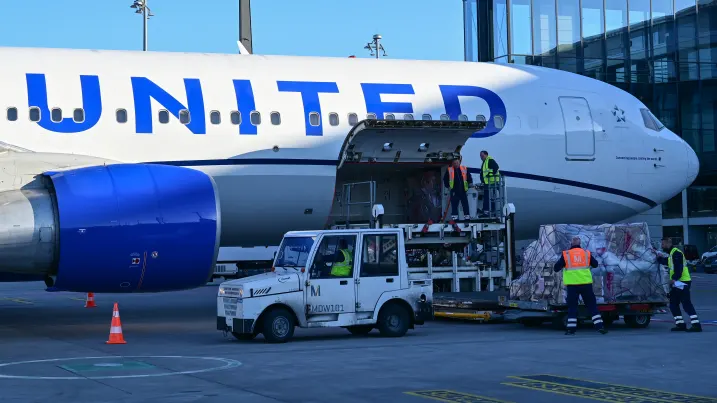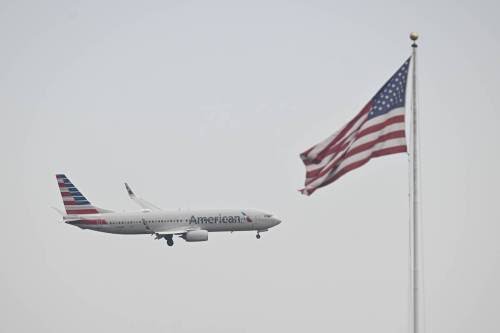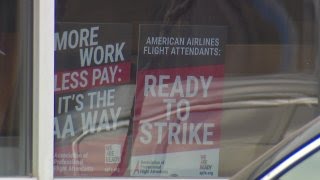Baggage piles up at O’Hare Airport as massive outage fouls up United schedule
The airline was seeing carting away travelers’ luggage as flights were grounded due to the outage. Screens were put up to block views of the growing pileBaggage from United Airlines travelers began piling up in O’Hare Airport’s Terminal 2 as an “unprecedented” technology outage impacted flights and businesses worldwide Friday.
The airline was seeing carting away travelers’ luggage as flights were grounded due to the outage. Screens were put up to block views of the growing pile.United was one of several major airlines impacted by the outage. Delta and American Airlines both also saw flights halted.
United Airlines said the outage was “impacting computer systems worldwide.”
Around 5:30 a.m. flights started resuming, but many remained delayed.
“A third-party outage is impacting computer systems, including at United and many other organizations worldwide. As we work to fully restore these systems, some flights are resuming,” the airline said, offering customers a waiver to change their travel plans and warning of ongoing delays.
A spokesperson for the airline did not respond to NBC Chicago’s request for comment on why luggage was being moved to a new terminal.A worldwide Microsoft outage dramatically impacted a number of services from flights to banks and more for several hours early Friday morning.
Airlines and airports across the United States, Europe, Australia, India and elsewhere were reporting problems, with some flights grounded in Chicago and beyond. Retail outlets, banks, railway companies and hospitals in several parts of the world were also affected in what appeared to be an unprecedented internet disruption.
Microsoft 365 posted on X that the company was “working on rerouting the impacted traffic to alternate systems to alleviate impact in a more expedient fashion” and that they were “observing a positive trend in service availability.”
On Friday, Microsoft said a majority of services were recovered, according to CNBC. However, the company noted some customers may still experience issues.
The chief executive of the cybersecurity company at the heart of the worldwide outage said it was working to fix a defect sent out in a Windows update.
“This is not a security incident or cyberattack,” CrowdStrike CEO George Kurtz said on the social platform X. “The issue has been identified, isolated and a fix has been deployed.”
Kurtz said there was a defect in a “single content update for Windows hosts.” Mac and Linux hosts were not affected.
The company referred customers to its support portal for updates.
United Airlines faced significant disruption at O’Hare Airport’s Terminal 2 due to a technology outage that impacted its operations worldwide on Friday. The outage caused flights to be grounded and baggage to pile up, as travelers’ luggage was carted away to mitigate the growing backlog. Screens were erected to block views of the increasing pile of baggage, highlighting the severity of the situation. United Airlines was not alone in this predicament; Delta and American Airlines also experienced flight halts due to the same outage.
The disruption began impacting computer systems globally early Friday morning, with United Airlines confirming the issue affected their operations and those of many other organizations worldwide. Despite efforts to restore these systems, delays continued even after flights began resuming around 5:30 a.m. United offered customers a waiver to change their travel plans and warned of ongoing delays as they worked to fully resolve the issue.
United Airlines did not immediately respond to requests for comments on the situation, particularly regarding why luggage was being moved to a different terminal. However, it was clear that the airline, along with many others, was grappling with an unprecedented technology failure.
The cause of the outage was identified as a worldwide Microsoft issue, which significantly impacted various services from flights to banks and beyond. Airlines and airports in the United States, Europe, Australia, India, and other regions reported problems, leading to grounded flights and disrupted services across multiple sectors. Retail outlets, banks, railway companies, and hospitals were also affected, making this one of the most widespread internet disruptions in recent memory.
Microsoft 365 acknowledged the problem on social media, indicating they were working to reroute impacted traffic to alternate systems to alleviate the issue more expediently. By Friday, Microsoft reported that most services were recovering, although some customers might still experience residual issues. The root cause was traced back to a defect in a Windows update, which affected many systems but did not constitute a security incident or cyberattack.
CrowdStrike CEO George Kurtz explained on the social platform X that the problem was due to a defect in a “single content update for Windows hosts.” This issue did not affect Mac and Linux hosts. CrowdStrike, the cybersecurity company involved, isolated the defect and deployed a fix, ensuring that the problem was addressed. The company directed customers to its support portal for further updates and reassurances that the issue was being managed effectively.
The outage’s impact on United Airlines was particularly visible at O’Hare Airport, where the accumulation of baggage became a physical representation of the operational chaos. With flights grounded, passengers were left in limbo, unable to retrieve their luggage or continue their travel plans. The scene at Terminal 2 underscored the airline’s logistical challenges as it attempted to manage the fallout from the technology failure.
The broader implications of the outage extended beyond airlines. Numerous sectors, including banking and healthcare, experienced disruptions, demonstrating the interconnectedness of modern technology systems and the cascading effects of such a significant outage. The reliance on a single technology provider for critical systems highlighted vulnerabilities that could have far-reaching consequences.
As flights resumed and services began returning to normal, the focus shifted to understanding the outage’s full impact and preventing similar occurrences in the future. Airlines and other affected organizations likely conducted thorough reviews of their contingency plans and disaster recovery protocols to ensure they could respond more effectively to future disruptions.
The incident also prompted discussions about the importance of diversifying technology providers and implementing robust backup systems. Organizations worldwide recognized the need to mitigate risks associated with relying on a single provider for essential services. This realization could drive changes in how businesses approach their technology infrastructure, emphasizing redundancy and resilience.
For travelers affected by the outage, the experience was undoubtedly frustrating. The inability to access flights or retrieve luggage compounded the inconvenience caused by the global disruption. Airlines like United worked to provide accommodations and support to impacted passengers, but the situation highlighted the challenges of managing customer satisfaction during widespread operational failures.
The technology outage that disrupted United Airlines and many other organizations worldwide was a stark reminder of the vulnerabilities inherent in our interconnected systems. The swift response to identify and fix the issue demonstrated the effectiveness of collaboration and communication in mitigating the impact. However, the incident also underscored the need for continued vigilance and investment in resilient, diversified technology infrastructure to safeguard against future disruptions. The aviation industry, along with other affected sectors, will likely use this experience to enhance their preparedness and resilience in the face of potential technology failures.






